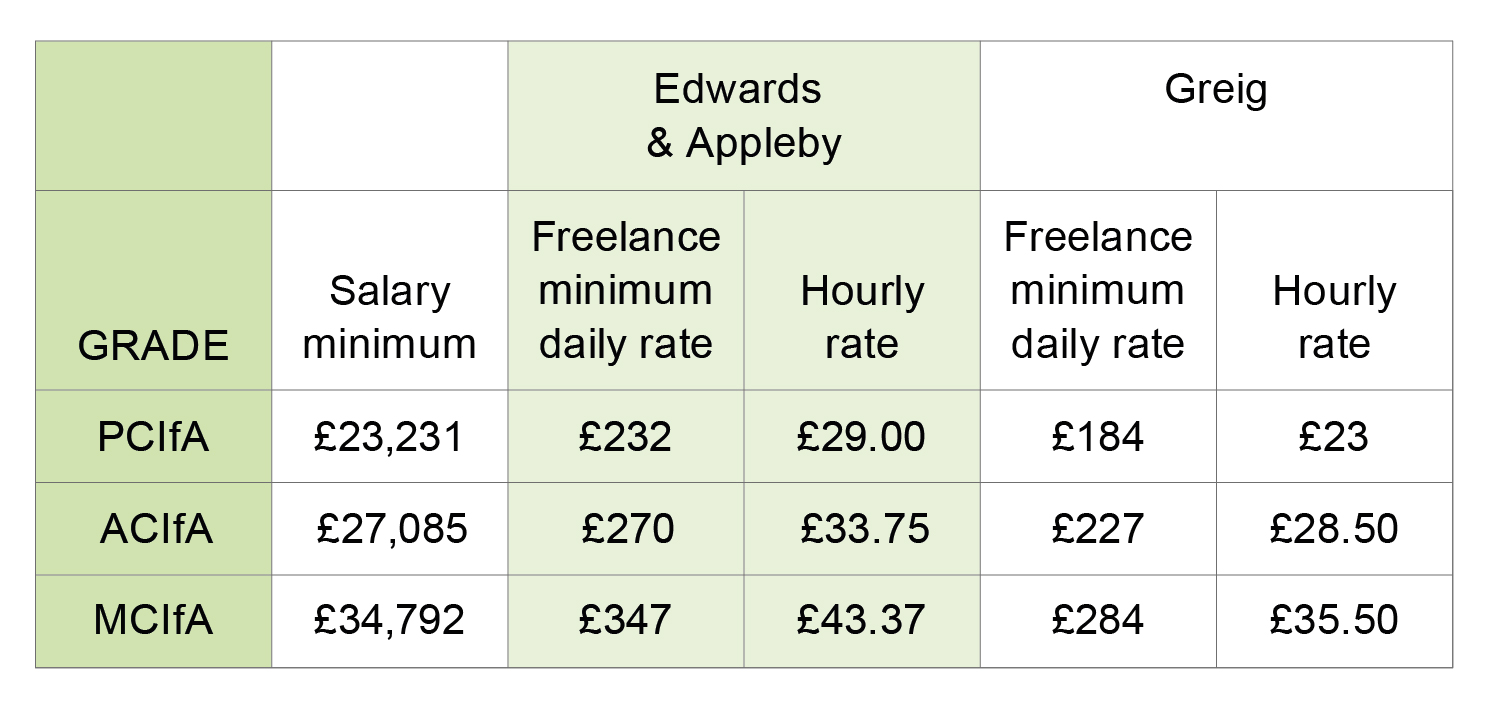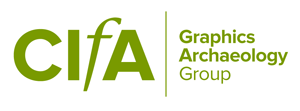This guide is aimed at those intending to become full-time freelance archaeological illustrators or graphics specialists, and follows on from ‘Getting Started in Archaeological Illustration’. Many of the recommendations in that document hold good for a freelance career – you will ideally have a good background knowledge of archaeology, and some excavation experience is helpful to any archaeological work. You will need a very extensive portfolio, numerous contacts within the business, a number of years’ experience in illustration/graphics/design, and a thorough grounding in the field you are seeking work in, whether it be general illustration, artefacts, reconstruction, publication design, etc.
It is not advisable to attempt to start up as a freelance without considerable previous experience.
Becoming a freelance illustrator is essentially setting up a small business, and needs to be approached in a professional manner. Do you have a Business Plan? Have you considered a budget? Sat down and thought about whether you can actually make a living at this? Do you have reliable clients who can supply you with work consistently over several years?
Starting-up costs
Bear in mind that in order to set up as a freelance you will have various start-up expenses. These will vary depending on what areas you are intending to work in, but probably will include some or all of the following:
Somewhere to work
Many freelancers work from home rather than hiring office or studio space, which can be prohibitively expensive for a new starter. Working from home is, post-Covid, rather more familiar than it once was, but to do it permanently requires a dedicated space which may involve costs such as appropriate office furniture, shelving, lighting, etc. Depending on what sort of work you do, a good fast broadband connection may be essential, and costs such as phone, electricity and heating need to be considered (see below).
Insurance
Note that working from home may affect your home insurance, as it involves risks such as public liability cover for business visitors to your premises, and cover for business equipment and stock. If in rented accommodation, check your position with your landlord. If you are involved with drawing artefacts, your clients may require additional security such as a lockable secure cupboard to store finds, and a burglar alarm system. You should also consider professional indemnity cover to insure against a client who alleges professional negligence, breach of confidence, breach of copyright, or similar charges.
‘The reality is that any small business providing a professional service that can be challenged is vulnerable to a claim of negligence when the advice or service fails to meet a client’s expectations. From allegations of a breach of copyright to accusations of defamation, these kinds of claims can be costly and disruptive regardless of whether they’re fair or not.’ Hiscox
Equipment
It may be that you just need a drawing board and a few pens, but it is more than likely that you will need to invest in a variety of equipment, primarily:
• A computer powerful enough to deal with the job, and a good-sized monitor;
• A graphics tablet, if you use one;
• Scanner, printer, any other peripherals;
• Software;
• Possibly also camera, tripod, lights (for artefact photography or photogrammetry).
There are some programs that are widely used within the industry, but industry-standard software can be costly, even when available on monthly subscriptions:
• Adobe Illustrator can be had for c.£20 a month; but if you require Illustrator, InDesign, Photoshop and Acrobat the better bet is to get the entire CC suite (£52 a month, rather than £75+ for the individual apps, and you get Premiere, Dreamweaver and numerous others as well.)
• Affinity offer image-editing, graphics and layout apps (Photo, Designer, Publisher) similar to Photoshop, Illustrator and InDesign for a one-off price (currently £70 apiece), which can save hundreds of pounds on Adobe’s subscription model.
• Agisoft Metashape: a single ‘node-locked’ licence (Standard edition): $179 (£144)
• AutoCAD: £1,986 a year, which may be out of the question for a start-up.
• AutoCAD LT: £486 a year
There are some open-source or cheaper programs available that can be adequate for a freelancer’s needs. See the Resources page on the GAG website for some suggestions.
Additional ongoing expenses
• Setting up a website to promote your new business may be advisable; you may be able to design it yourself for free but will still need to pay for hosting and a domain name.
• Cloud storage may have to be paid for if you need more than the minimum; other things (eg subscriptions to Fonts.com, for that awkward font your client insists on that’s only available from them)
• CIfA subscription; though handily there is a concessionary rate of £31 available to those on very low earnings (less than £10,000 a year), which a freelance can be eligible for.
• Any other subscriptions (eg AOI; IPSE (Association of Independent Professionals and the Self-Employed) which offers a range of member benefits such as contract review services and contract templates, advice, tax and legal helplines and insurances for the self-employed, from about £9.50/month).
• Training costs will also have to be covered; you need to put in about 3– 5 days per year in order to meet with CIfA CPD requirements, which could be in online courses, attending CIfA CPD events, or evening classes at a local college; at a minimum allow about £200 per year for costs, plus any working time you might lose.
• Accountancy services may be required if you’re not at all good at filling in self-assessment tax returns. Remember, most importantly you will have to register as self-employed with HMRC!
• Remember to set up a private pension. As an employee with a workplace pension, your employer will contribute to your pension fund, but as a freelance you’re on your own, and will probably have to increase contributions, so be sure to budget for this when setting daily rates. Aim to put aside at least 12.5% – 20% of income in pension contributions, depending on what age you start saving.
All in all, it may cost up to £5,000 to get set up initially. This can be put down as expenses against tax, but still has to be paid for up-front. Many of these costs will also recur, either annually or every few years in the case of computers, so should be allowed for when calculating charge rates (see below).
Example [based on personal experience of the author]:
One-off or longer-term expenses:
Office furniture etc: £500
Computer equipment: £1500
Camera equipment: £600
Annual expenses:
Software: £700
Phone and broadband: £400
Stationery: £150
Insurance: £200
Web hosting & domain name: £150
Training: £300
Membership of professional bodies: £150
Running costs (heating, electric etc): £300* (or c £500 at 2023 prices)
*this can be tricky to calculate if working from home, depends how many hours – see below:
https://www.freeagent.com/guides/expenses/business-use-of-home/
Freelance Rates – what to charge?
There has for a long time been a lack of guidance from professional bodies on the subject of freelance rates. Recently CIfA published some guidelines for self-employment which offered some guidance for charge-out rates, (CIfA 2017; Mills 2007). The example rates quoted in that document provide an extremely generous allowance for overheads and on-costs, and also assumes a very low number of non-productive days (days in which you have no work coming in). A freelance illustrator might typically have much lower overheads, but, in my experience anyway, considerably more non-working time.
In order to give an idea of suitable rates for freelance illustrators, a guide to basic minimum charge-out rates is given below, which seek to adapt CIfA’s recommended salary minima for those in paid employment to a calculation of suitable freelance rates. The first figures use a method of calculating a rate suggested at the CIfA conference event on freelancing presented by Rachel Edwards and Catrina Appleby, based on a desired salary divided by 100 to give a day rate (also reported in GAG Newsletter: Collett 2016); the right-hand columns use an alternative method of calculating a freelance rate for comparable professions suggested by graphic designer and blogger James Greig (Greig 2015). The table below shows possible minimum freelance rates based on CIfA salary minima for 2023:

It should be stressed that these rates are based on minimum salaries, and bear in mind that these rates will have to cover all the benefits that an employer would normally provide but the freelancer has to find for herself (National Insurance and pension contributions, sick pay, holiday pay and all the expenses mentioned above). Employers should be aware that, by taking on a freelance, they are not only avoiding the commitment in costs involved in employing a member of staff, but engaging the services of a dedicated and experienced professional who is worthy of a decent level of reimbursement.
Contracts and Terms & Conditions
Before embarking on a freelance project for a client, it’s essential that you know when and whether you’ll get paid. Make sure you get more than a verbal promise of work: ideally get a purchase order or letter of appointment from your client detailing the amount payable for the work you’ve agreed to undertake, and a completion date, and do not start work until you have one.
It’s not unusual for archaeological projects, particularly post-excavation and publication projects, to hit unexpected delays and be held up for months or, in some cases, decades. Make sure you have an agreement in place to be paid for the work you have undertaken to date, at the very least; or for payment of a percentage of the full fee if the project is cancelled or seriously delayed by your client. Set out beforehand your terms and conditions; for example, that work must be supplied by an agreed date to ensure completion by an agreed date, or if a large project is undertaken, interim payment points are agreed. Ideally, penalty clauses for non-fulfillment by commercial archaeology companies of contracts with freelance illustrators would be a requirement.
See sample terms and conditions here: Sample_Terms_and_Conditions.
I am not proposing to deal with copyright here, as this is a separate and thorny topic. The illustrator has the right to be identified as such in published work. In archaeological publication, copyright is often required by the publisher (who may not even be your client), so you are often required to sign away your copyright when accepting a commission.
Refs / further information and useful links
Collett, L., 2016. ‘Going Solo’, Graphic Archaeology, Summer 2016, 7-9
http://www.gag-cifa.org/wp-content/uploads/2014/12/Newsletter_Autumn-2016.pdf
CIfA 2017. Self-employment Guidance
http://www.archaeologists.net/sites/default/files/Self%20employment%20guidance%202017%20final_0.pdf
Getting Started in Archaeological Illustration (GAG):
http://www.gag-cifa.org/?page_id=1032
Greig, J., 2015. ‘The biggest mistake you can make as a freelancer’,
https://www.greig.cc/freelancing-the-biggest-mistake/
IPSE (Association of Independent Professionals and the Self-Employed):
https://www.ipse.co.uk
Mills, P. 2007. ‘A Guide to Charge-out Rates for Archaeological Specialists’, The Archaeologist 63, 4–5.
https://www.archaeologists.net/sites/default/files/ta63.pdf
UK Hourly Wage Calculator
https://wageindicator.co.uk/pay/hourly-pay-converter
Guardian, 11 Jan 2020: ‘Self-employed? Here’s what you should do about pensions’
https://www.theguardian.com/money/2020/jan/11/self-employed-what-to-do-about-pensions
